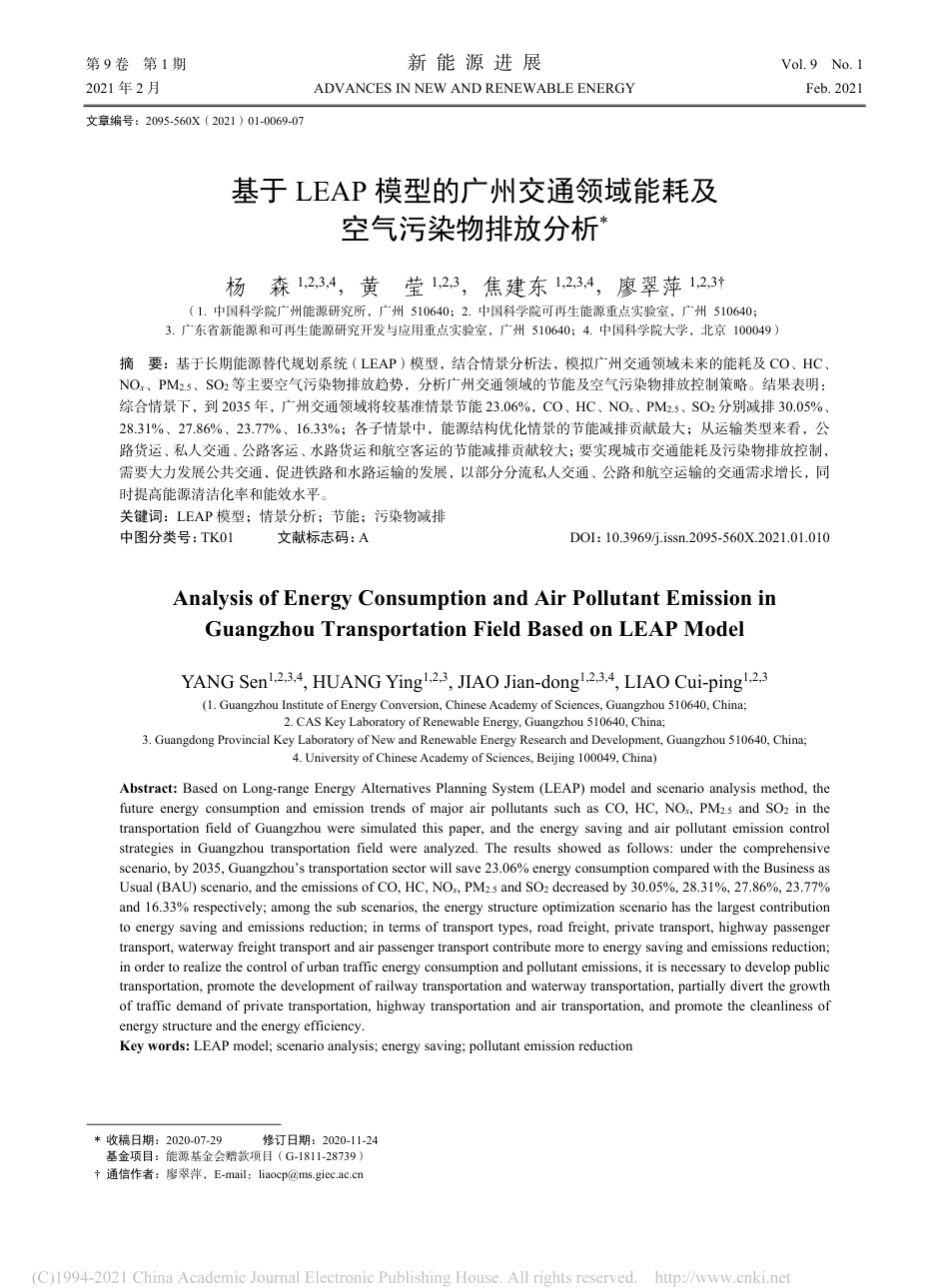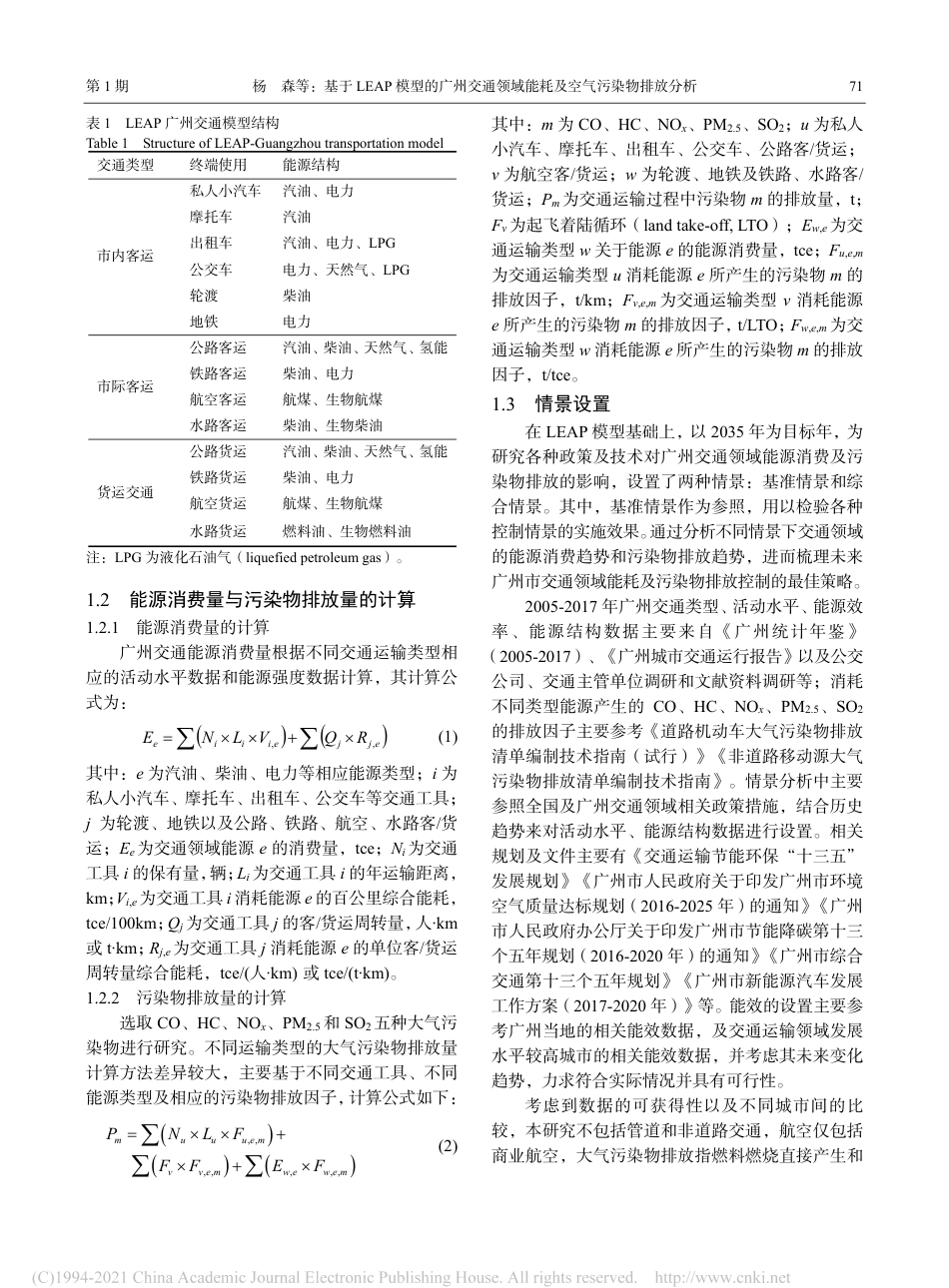第 9 卷 第 1 期 新 能 源 进 展 Vol. 9 No. 1 2021 年 2 月 ADVANCES IN NEW AND RENEWABLE ENERGY Feb. 2021 * 收稿日期:2020-07-29 修订日期:2020-11-24 基金项目:能源基金会赠款项目(G-1811-28739) † 通信作者:廖翠萍,E-mail:liaocp@ms.giec.ac.cn 文章编号:2095-560X(2021)01-0069-07 基于 LEAP 模型的广州交通领域能耗及 空气污染物排放分析* 杨 森 1,2,3,4,黄 莹 1,2,3,焦建东 1,2,3,4,廖翠萍 1,2,3† (1. 中国科学院广州能源研究所,广州 510640;2. 中国科学院可再生能源重点实验室,广州 510640; 3. 广东省新能源和可再生能源研究开发与应用重点实验室,广州 510640;4. 中国科学院大学,北京 100049) 摘 要:基于长期能源替代规划系统(LEAP)模型,结合情景分析法,模拟广州交通领域未来的能耗及 CO、HC、NOx、PM2.5、SO2 等主要空气污染物排放趋势,分析广州交通领域的节能及空气污染物排放控制策略。结果表明:综合情景下,到 2035 年,广州交通领域将较基准情景节能 23.06%,CO、HC、NOx、PM2.5、SO2 分别减排 30.05%、28.31%、27.86%、23.77%、16.33%;各子情景中,能源结构优化情景的节能减排贡献最大;从运输类型来看,公路货运、私人交通、公路客运、水路货运和航空客运的节能减排贡献较大;要实现城市交通能耗及污染物排放控制,需要大力发展公共交通,促进铁路和水路运输的发展,以部分分流私人交通、公路和航空运输的交通需求增长,同时提高能源清洁化率和能效水平。 关键词:LEAP 模型;情景分析;节能;污染物减排 中图分类号:TK01 文献标志码:A DOI:10.3969/j.issn.2095-560X.2021.01.010 Analysis of Energy Consumption and Air Pollutant Emission in Guangzhou Transportation Field Based on LEAP Model YANG Sen1,2,3,4, HUANG Ying1,2,3, JIAO Jian-dong1,2,3,4, LIAO Cui-ping1,2,3 (1. Guangzhou Institute of Energy Conversion, Chinese Academy of Sciences, Guangzhou 510640, China; 2. CAS Key Laboratory of Renewable Energy, Guangzhou 510640, China; 3. Guangdong Provincial Key Laboratory of New and Renewable Energy Research and Development, Guangzhou 510640, China; 4. University of Chinese Academy of Sciences, B...



